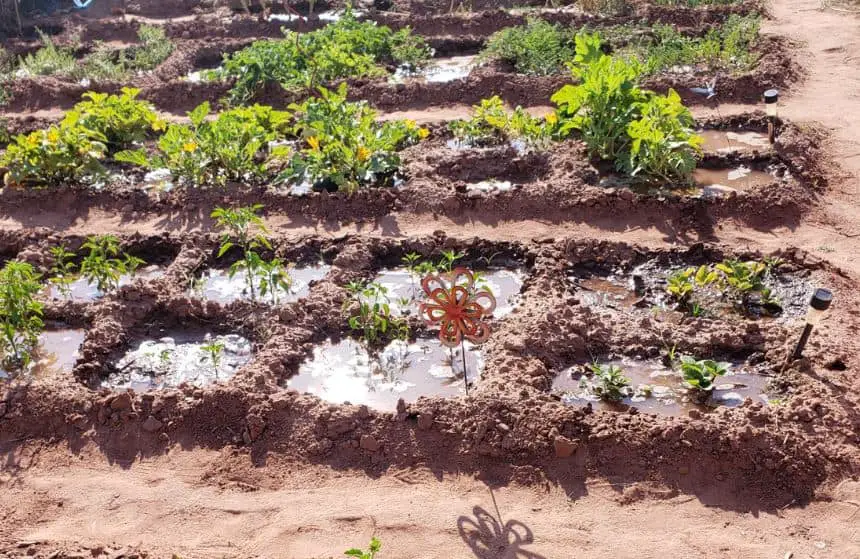Water conservation is a high priority due to the implications of global warming, particularly when it comes to gardening in dry settings. Conservationists, scientists, and gardeners have developed several water-saving methods. Still, the Zuni waffle garden, which dates back only 4,000 years, has the key to resolving the problem of little water in dry settings. How do waffle gardens work? A form of irrigation used in waffle garden beds is the opposite of raised bed irrigation. Learn more about waffle garden irrigation & how to use waffle garden design in your garden by reading on.

About Waffle Gardens
The Zuni are an American Pueblo tribe that has lived in western New Mexico’s Zuni River basin for over 4,000 years and has farmed the area. It seldom rains in this region, which is extremely dry. The Zuni people started gardening using a grid of squares bordered by berms to direct rainwater straight to the plants after many generations of attentive observation.
Zuni Irrigation Design
Latdekwi, or waffle gardens, were big enough for a single family to maintain and use. They were utilized similarly to a kitchen garden. There was, however, a wider picture.
There was a lack of water in the region where the Zuni cultivated, and the soil needed to be more friendly. The Zuni employed terracing to filter water down to farms on alluvial fans, using the richer soil and water flow on the nearby mesas. Farmers could redirect rainwater and rich soil from the higher watersheds onto the resultant farms.
How to Make Waffle Garden Beds
Today’s gardeners may gain from the ancient Zuni habit of using waffle gardens to produce crops like tobacco and chiles.
The fundamental idea is to create interconnecting planting spaces about 2 feet (61 cm) square and surround them with berms or soil walls. Sizes may vary somewhat. The berms should be a few inches (5 cm) tall to catch any water runoff and channel it to the roots of the plants.
The final result should resemble a waffle, with the plants placed in the depressions where the syrup would collect on the waffle. Naturally, the depressions will keep water at the plant’s roots under this situation.
A garden with 10-foot grids surrounded by boulders is similar if bigger, technique. Dryland farming has also used this technique.
Both gardens would, in any scenario, be mulched with sand, gravel, or rock to save water, delay evaporation, and lessen water runoff.
Zuni waffle gardens were still operating when a dam was constructed across the Zuni River in 1904. By saving and collecting accessible water for a dryland garden, current gardeners may learn from these individuals.


